- Clone
- I015F8 (See other available formats)
- Regulatory Status
- RUO
- Other Names
- IL-4R
- Isotype
- Rat IgG2b, κ
- Ave. Rating
- Submit a Review
- Product Citations
- 4 publications
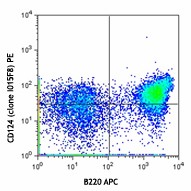
| Cat # | Size | Price | Quantity Check Availability | Save | ||
|---|---|---|---|---|---|---|
| 144803 | 25 µg | £105 | ||||
| 144804 | 100 µg | £230 | ||||
CD124, a subunit of IL-4R, is a 140 kD transmembrane glycoprotein. It associates with either the common γ-chain (CD132) to form the type I IL-4R complex, which specifically binds IL-4, or with IL-13Ra1 to form the type II IL-4R heterodimeric complex, which binds and transduces signals from either IL-4 or IL-13. A truncated form of IL-4Rα exists in soluble form in biological fluids. CD124 is expressed on mouse late precursors and mature B cells, T cells, monocytes, and has low expression on granulocytes. In B cells, CD124 can bind IL-4 and IL-13 and regulate IgE antibody production. In T cells, the type I IL-4R (IL-4R/gC) is mostly responsible for Th2 cell expansion by mediating IL-4-dependent activation of the transcription factors in hematopoietic cells. The type II IL-4R (IL-4R/IL-13Ra1) is the main route for nonhematopoietic cell responses to IL-4 or IL-13.
Product DetailsProduct Details
- Verified Reactivity
- Mouse
- Antibody Type
- Monoclonal
- Host Species
- Rat
- Immunogen
- Recombinant Mouse IL4Rα encoding the extracellular domain (amino acid residues 26 - 233) was fused to the carboxy-terminal Fc region of human IgG1 via a linker peptide.
- Formulation
- Phosphate-buffered solution, pH 7.2, containing 0.09% sodium azide.
- Preparation
- The antibody was purified by affinity chromatography and conjugated with PE under optimal conditions.
- Concentration
- 0.2 mg/ml
- Storage & Handling
- The antibody solution should be stored undiluted between 2°C and 8°C, and protected from prolonged exposure to light. Do not freeze.
- Application
-
FC - Quality tested
- Recommended Usage
-
Each lot of this antibody is quality control tested by immunofluorescent staining with flow cytometric analysis. For flow cytometric staining, the suggested use of this reagent is ≤1.0 µg per million cells in 100 µl volume. It is recommended that the reagent be titrated for optimal performance for each application.
- Excitation Laser
-
Blue Laser (488 nm)
Green Laser (532 nm)/Yellow-Green Laser (561 nm)
- Product Citations
-
- RRID
-
AB_2561729 (BioLegend Cat. No. 144803)
AB_2561730 (BioLegend Cat. No. 144804)
Antigen Details
- Structure
- 140 kD type I transmembrane glycoprotein, associates with common γ chain or IL-13 receptor alpha-1 subunit
- Distribution
-
B cells, T cells, monocytes, and low levels on granulocytes.
- Function
- Regulates IgE antibody production in B cells, Th2 cell expansion, and IL-4 or IL-13 induced response in non-hematopoietic cells
- Interaction
- STAT6
- Ligand/Receptor
- IL-4, IL-13
- Cell Type
- B cells, Granulocytes, Monocytes, T cells
- Biology Area
- Apoptosis/Tumor Suppressors/Cell Death, Cell Biology, Immunology, Signal Transduction, Transcription Factors
- Molecular Family
- CD Molecules, Cytokine/Chemokine Receptors
- Antigen References
-
1. Kashiwada M, et al. 2001. J. Immunol. 167:6382.
2. Gilmour J, et al. 2008. J. Immunol. 124:437.
3. Hage T, et al. 1999. Cell 97:271. - Gene ID
- 16190 View all products for this Gene ID
- UniProt
- View information about CD124 on UniProt.org
Related FAQs
- What type of PE do you use in your conjugates?
- We use R-PE in our conjugates.
Other Formats
View All CD124 Reagents Request Custom Conjugation| Description | Clone | Applications |
|---|---|---|
| PE/Cyanine7 anti-mouse CD124 (IL-4Rα) | I015F8 | FC |
| Purified anti-mouse CD124 (IL-4Rα) | I015F8 | FC |
| PE anti-mouse CD124 (IL-4Rα) | I015F8 | FC |
| APC anti-mouse CD124 (IL-4Rα) | I015F8 | FC |
| TotalSeq™-C0916 anti-mouse CD124 (IL-4Rα) | I015F8 | PG |
| PE/Dazzle™ 594 anti-mouse CD124 (IL-4Rα) | I015F8 | FC |
| TotalSeq™-B0916 anti-mouse CD124 (IL-4Rα) | I015F8 | PG |
| APC/Fire™ 750 anti-mouse CD124 (IL-4Rα) | I015F8 | FC |
Customers Also Purchased
Compare Data Across All Formats
This data display is provided for general comparisons between formats.
Your actual data may vary due to variations in samples, target cells, instruments and their settings, staining conditions, and other factors.
If you need assistance with selecting the best format contact our expert technical support team.
-
PE/Cyanine7 anti-mouse CD124 (IL-4Rα)

C57BL/6 mouse splenocytes were stained with B220 Alexa Fluor... -
Purified anti-mouse CD124 (IL-4Rα)
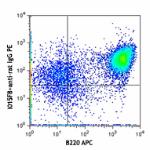
C57BL/6 mouse splencotyes were stained with purified CD124 (... 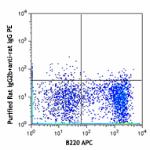
-
PE anti-mouse CD124 (IL-4Rα)

C57BL/6 mouse splenocytes were stained with B220 APC and CD1... 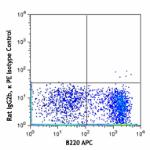
-
APC anti-mouse CD124 (IL-4Rα)

C57BL/6 mouse splenocytes were stained with B220 PE and CD12... -
TotalSeq™-C0916 anti-mouse CD124 (IL-4Rα)
-
PE/Dazzle™ 594 anti-mouse CD124 (IL-4Rα)

C57BL/6 mouse splenocytes were stained with anti-mouse/human... -
TotalSeq™-B0916 anti-mouse CD124 (IL-4Rα)
-
APC/Fire™ 750 anti-mouse CD124 (IL-4Rα)

C57BL/6 mouse splenocytes were stained with anti-mouse/human...

 Login / Register
Login / Register 












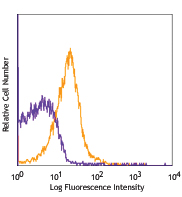
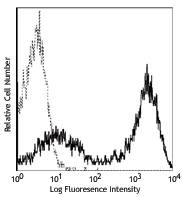
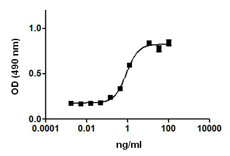








Follow Us